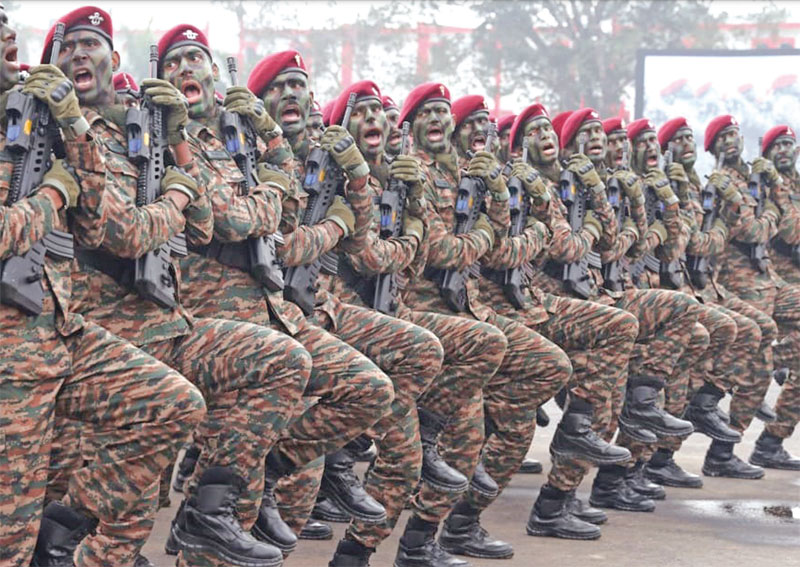Wrong Foot Forward
Pravin Sawhney
The replacement of the iconic 1971 war surrender painting in the chief of army staff’s lounge by an amateurish mishmash is a matter of concern for one big reason—complete erosion of Indian Army’s professionalism. The new painting—perhaps, a product of Project Udbhav, which is a collaborative endeavour of the Indian Army and the United Services Institution of India, seeking to ‘integrate age-old wisdom with contemporary military pedagogy’ (according to the army’s handout)—, portraying some weapons, including unmanned systems on one side of the canvas and a chariot with some mythological weapons on the other side, is an acknowledgement by the Indian Army leadership that it neither understands modern warfare, nor cares to prepare for it. This when, India’s primary threat, the PLA, is at the cutting edge of this warfare.

The character of war (how war is to be fought) has two aspects: the science of war which is about technologies and the art of war which seeks optimisation of technologies for the best outcome. Now, both the science of war and the art of war (generalship) should go hand in hand for credible war preparedness. Interestingly, the deficit in the science of war can be made up to a certain extent by good generalship, but the opposite is not true.
Unfortunately, in the case of Indian military, the art of war has suffered a double whammy. One, 34 years of uninterrupted counter terror operations by the Indian Army in Jammu and Kashmir has seen army leaders rise in service and rank doing tactical encounters with terrorists. For this reason, the Indian military still follows the hugely outdated US’ 1987 Air Land Battle war concept for combat. Ironically, instead of understanding the evolution of warfare over decades which has been missed by the Indian military, a quick fix is being done. An unimaginative generalship, without changing the art of war, is attempting to airdrop new technologies on 1987 war concepts and force structuring. Changing the art of war involves two steps: building war concepts and doing force structural reforms to support them.
And two, instead of keeping pace with the art of war to meet the advancements in science of war, the Indian military leadership has decided to slide back into ancient mythology and medieval battles to find answers for modern warfare. This is not a military project. This is a political project.
Sadly, the
Subscribe To Force
Fuel Fearless Journalism with Your Yearly Subscription
SUBSCRIBE NOW
We don’t tell you how to do your job…
But we put the environment in which you do your job in perspective, so that when you step out you do so with the complete picture.







